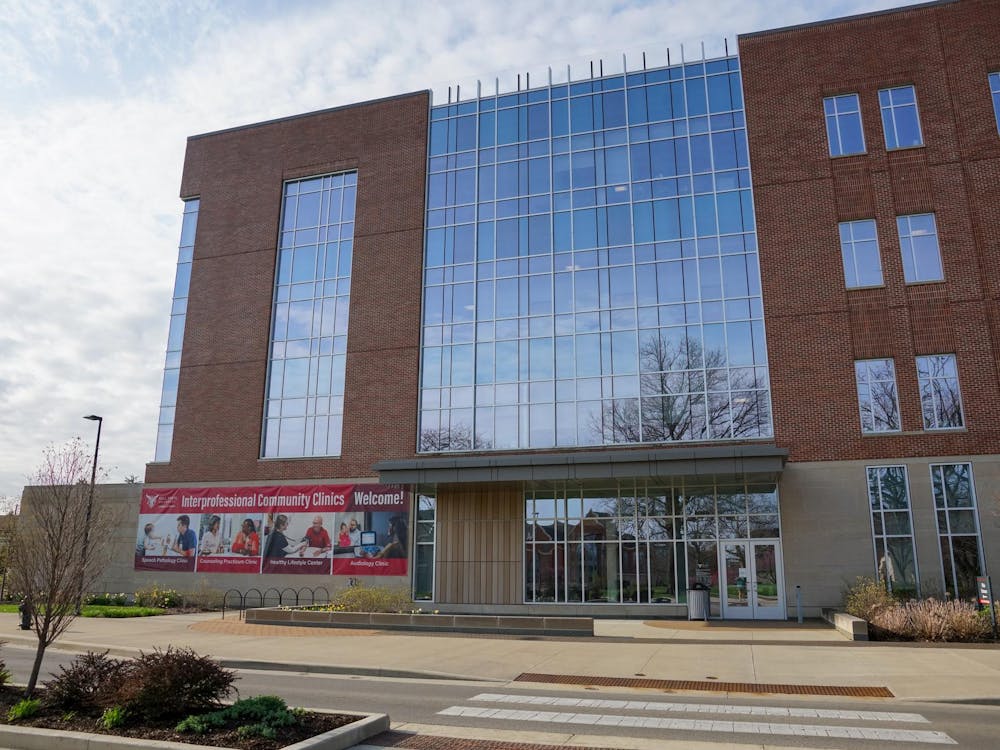Ball State used $5.8 million out of the university’s $9.3 million contingency fund to accommodate for the $12.623 million missing after the Ball State fraud case.
The university took $6.7 million of the loss out of university interest earnings on other investments.Students and faculty will not see any changes following the loss of millions of dollars in an investment fraud case. To ensure that things like faculty salaries and immersive learning funding aren’t affected, the university is writing off about half of the missing money from an extra account.
$5.8 million
Since the 2011 fraud case, the university is missing about $12.6 million. A little less than half, $5.8 million, will be replaced using the university’s contingency fund, said Bernard Hannon, associate vice president for Business Affairs and assistant treasurer.
The contingency fund is a reserve of money for the university to use for “unforeseen expenses.” Before the fraud case, it was up to $9.3 million, but is now down to $3.5 million. Hannon said Ball State usually aims to keep that fund around $9 to $10 million, although it varies.
As the reserve is depleted, there is less room for mistakes and emergencies until it is built back up.
The money in the fund is accumulated over many years and comes from year-end balances in accounts that can include the general fund, gifts to the university, indirect cost recovery on research grants, sales and services, interest earnings and other sources.
“Losing these reserves reduces our flexibility in making future decisions,” said Rick Hall, chair of the Board of Trustees.
$6.8 million
The rest of the missing money, $6.8 million, was written into university interest earnings. That is the money the university has earned from other investments.
In the past six years, Ball State’s interest earnings have averaged about $4.2 million each year, Hannon said. It varies depending on how much money is invested, interest rates in the market and the current investment portfolio.
The university’s focus seems to be on reallocating money from the budget rather than finding a plan to get that money back. There is still no plan for how the loss will be recouped. Hannon said the options are still being reviewed.
Using this money to cover the loss will not affect the university’s operating budget.
Interest earnings can be used to help cover operating expenses with the university’s general fund or transfer to reserve accounts.
However, the interest earnings used to write down the loss were not budgeted for operating expenses.
“The uncertainty of the timeline and outcome of that process make it impossible at this time to be more specific,” he said.
The full $13.165 million
In September 2011, Ball State was notified by the U.S. Attorneys’ Office that the university might have been a victim of fraud. The university lost $13.165 million in two fraud cases from 2008 and 2010.
Ball State conducted an internal investigation and discovered Gale Prizevoits, the former director of cash and investments, had made investments that were in violation of the university’s policy. She had attempted to conceal the transactions from the university by altering records. She was fired on Oct. 24, 2011.
The university was able to recover just $542,295.
The university employed Deborah Daniels of Krieg DeVault in July to look into concerns with internal controls. Daniels selected the accounting firm Crowe Horwath to help with the investigation.
Ball State has worked with the State Board of Accounts to record the losses with funds from contingency reserves and interest earnings to ensure the losses are accurately recorded in financial statements.
This loss comes on top of a loss in state funding this year. This year, Ball State received 1 percent less in funding than last year, but increased the operating budget by 2.9 percent.
Neither the contingency plan or interest earnings directly affect the operating budget, as state funding does.
The temporary reduction of the contingency funds and interest earnings does not worry the university, Hannon said.
“We will begin to build that balance back up again to our target amount,” Hannon said.
Still, Hall maintains that the loss from the fraud case is a negative.
“The use of $13.1 million on any aspect of the Ball State experience would obviously be helpful to students,” Hall said. “Our goal is to build these reserves; the loss of the funds still sickens us.”





